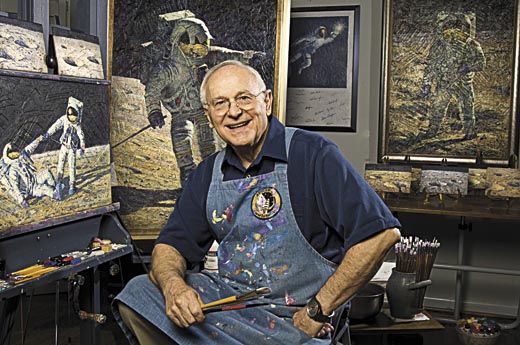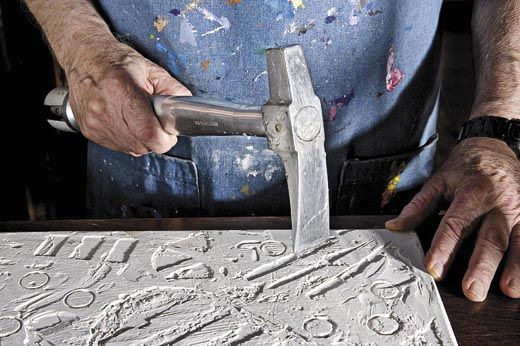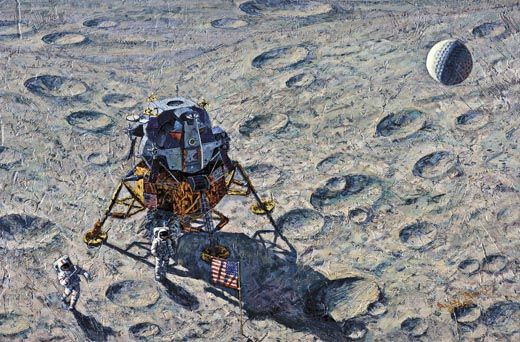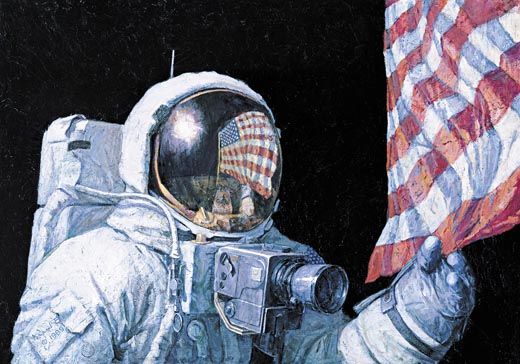The Art of a Moonwalker
Alan Bean’s moonscapes show what photographs can’t.
/https://tf-cmsv2-smithsonianmag-media.s3.amazonaws.com/filer/Space_AlanBean_Flash_AUG09.jpg)
From the day he entered flight training, Alan Bean thought he had the best job in the world — “until I looked on the TV one day and Al Shepard goes up in a rocket,” he recalled in the 2007 documentary In the Shadow of the Moon. “He’s gone higher than I’ve ever gone, and faster than I’ve ever gone, and most important, he’s made more noise doing it. How do I get that job?” Bean did get the job, and on November 19, 1969, he became the fourth man to walk on the moon. He and Apollo 12 commander Pete Conrad stayed on the lunar surface for more than a day, 10 hours more than Neil Armstrong and Buzz Aldrin. Bean would go on to command the second mission of the space station Skylab, eventually logging more than 1,670 hours in space.
In 1981, after 18 years as an astronaut, Bean retired to paint full-time. His subject of choice has been the Apollo program, and in honor of the 40th anniversary of the moon landing, Smithsonian Books and the National Air and Space Museum present a new book and exhibition of his work: Alan Bean: Painting Apollo, First Artist on Another World. The exhibition will run through January 13, 2010.




